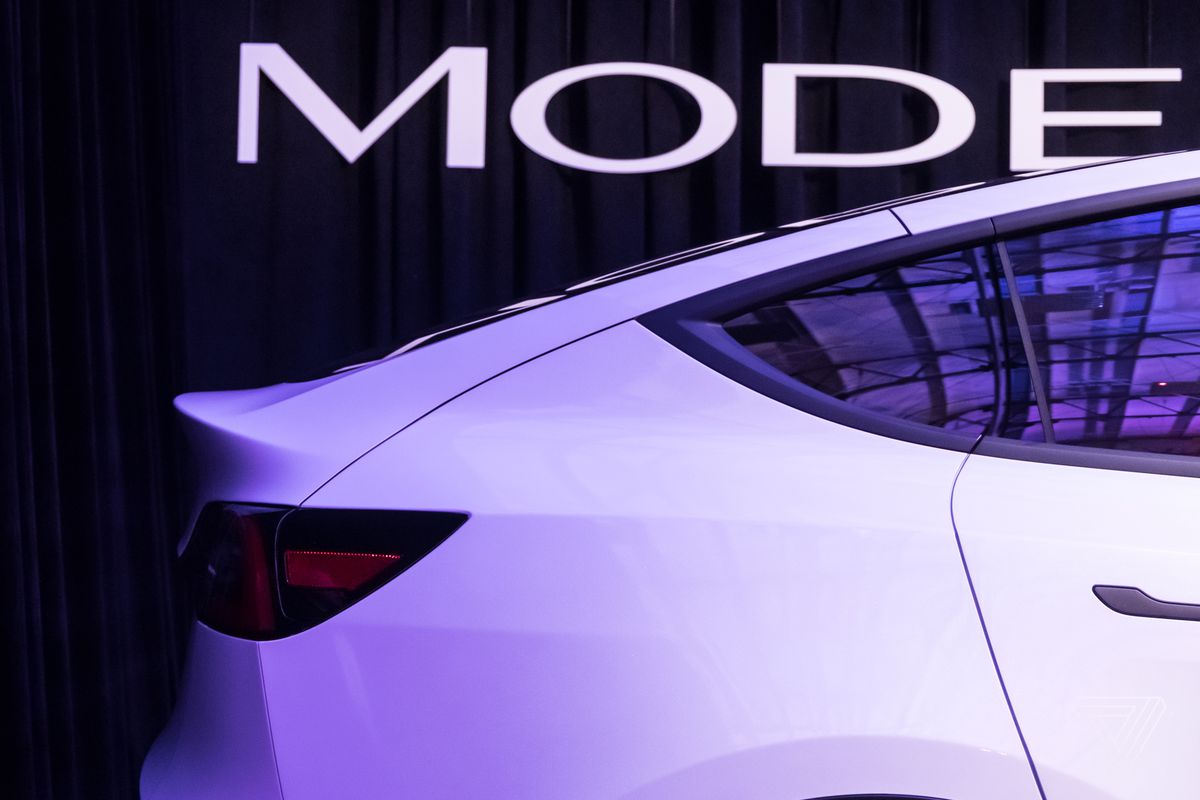The first thing that struck me about Tesla’s new Model Y when it was unveiled on stage in Los Angeles Thursday night was how much it looks like the Model 3. A few minutes later when I got inside it for a quick ride, the similarities were undeniable.
As we zipped down and back on Jack Northrop Avenue, just outside the fences that surround both Tesla’s design studio and SpaceX’s headquarters, it was hard at times to remember that I was in the front seat of a brand new car that won’t enter production until 2020. Aside from a slightly higher ride height and marginally improved visibility, I might as well have been in Tesla’s first mass-market electric car, the Model 3.
On one hand, that’s great. It meant the Model Y felt close to production-ready, and not like a shabby prototype that was shoved on stage to generate preorders. On the other, it was also a little… underwhelming?
:no_upscale()/cdn.vox-cdn.com/uploads/chorus_asset/file/15963751/tesla_model_y_3567.jpg)
:no_upscale()/cdn.vox-cdn.com/uploads/chorus_asset/file/15963750/tesla_model_y_3547.jpg)
To be fair, Tesla and its CEO Elon Musk had telegraphed as much in the run-up to the unveiling of the Model Y. For example, Musk said the new compact SUV would share about 75 percent of parts with the Model 3. I understood that could make it theoretically easier and cheaper to build the Model Y, but I guess I hadn’t processed how literally those similarities would manifest.
The Model Y shares the giant touchscreen, dashboard, and even the same center console as the Model 3. And since the Model 3 features one of the most sparse cockpits on the market, there was not much else to distinguish the Model Y’s interior save for the optional third row seats.
Looking ahead now, it seems pretty clear that one of the questions Tesla will face in the many months between now and when the first Model Ys ship in “Fall 2020” will be whether it’s different enough from the Model 3. Will the ride height, stockier profile, and the ability to cram in two jump seats distinguish the car enough for customers to care, especially when the Model 3 is cheaper? There were concerns that the Model Y might eat into demand for the Model 3, but after Thursday’s event, I think it’s worth considering the inverse of that problem.
At one point during the Model Y’s development, in May 2017, Musk announced that the company’s compact SUV would be built from scratch on a unique platform, with new battery architecture, less electrical wiring (which would make it easier to build the car using robots), and the same “Falcon Wing” style doors found on the Model X. He had apparently gone rogue; just three months later he said that, “upon the council of my executive team to reel me back from the cliffs of insanity, the Model Y will, in fact, be using substantial carry over from Model 3 in order to bring it to market faster.”
:no_upscale()/cdn.vox-cdn.com/uploads/chorus_asset/file/15963752/tesla_model_y_3580.jpg)
Who knows when Musk’s version of the Model Y would made it to the road. But the one that’s headed to production now won’t go on sale until late next year, so it isn’t clear how much time Tesla ultimately saved by following in the footsteps of many other automakers and designing a compact SUV that’s built on a sedan platform (hence the term of art “crossover”).
The version of the Model Y that was unveiled Thursday night will probably ultimately be cheaper and easier for Tesla to manufacture — two things it could desperately use after the struggles the company encountered with the Model 3 — but it will be hard not to spend the next year and a half wondering what wild idea Musk was conjuring up back in 2017.
The Model Y looks cool, and it felt fast. But we’ve known for years now that Tesla can design sleek-looking cars. And last year, the company even showed it can build them at scale when it pumped out around 140,000 Model 3s and 100,000 of the Model S and Model X.
What we still don’t know about Tesla is how it will handle the challenges that come with having that many customers on the road. We’ve seen a number of examples of quality issues with the company’s cars as the pace of manufacturing ramped up last year. And the company’s customer service has not been up to to the task of handling those complaints. Musk even said on Tesla’s latest quarterly call with Wall Street investors that improving the company’s service is his number one priority.
If the Model Y winds up as successful as Musk has predicted — he said Thursday that the car might ultimately sell more than the Model 3, S, and X combined — these problems will only be harder to solve. So Tesla has to solve them now, at a time when the company is closing stores, changing up its sales model, laying off workers, bringing the Model 3 to new markets, and facing more direct competition than ever.
My brief 60-second ride in the Model Y on Thursday night gave me the impression that the car will tick most of the boxes that people want from Tesla when it goes on sale late next year. What happens between now and then is still up in the air.
